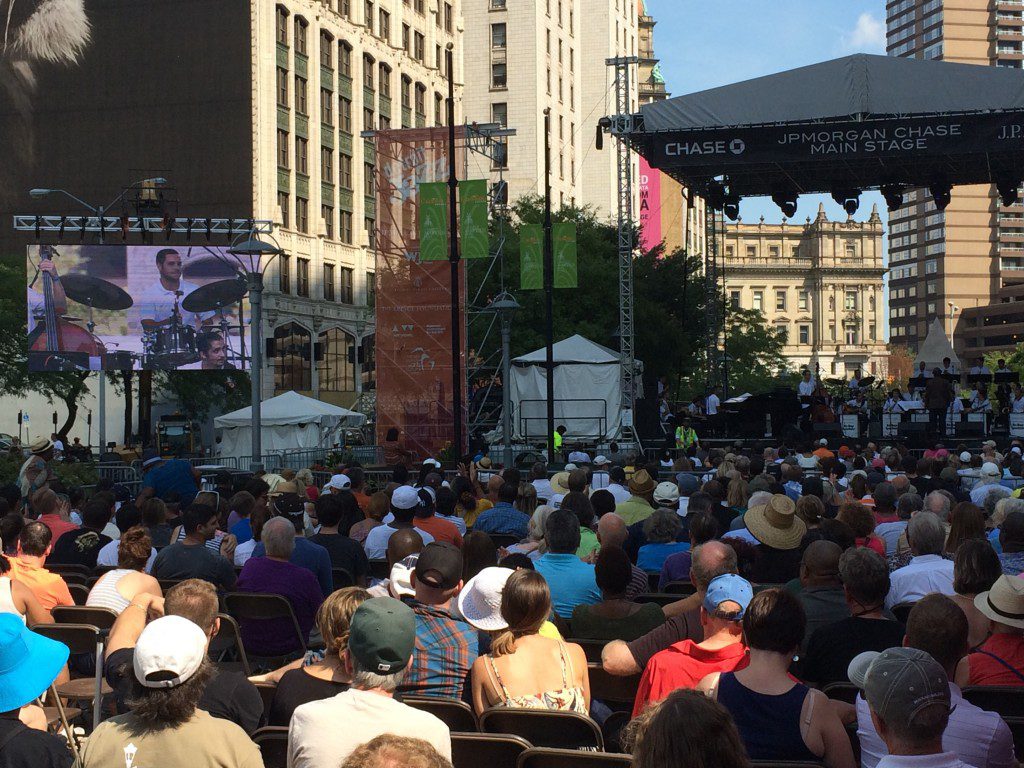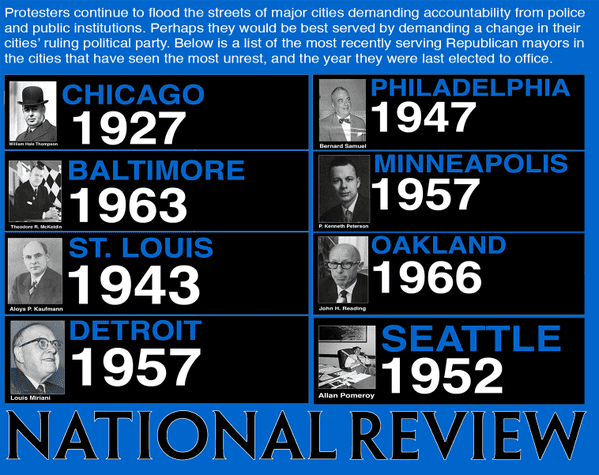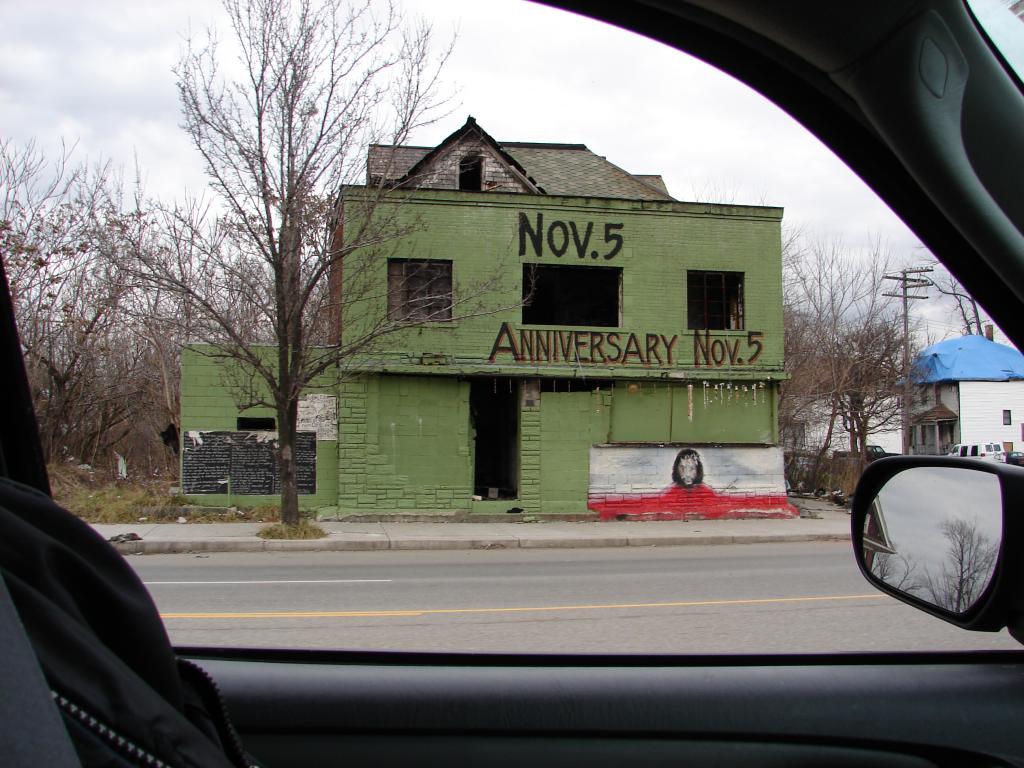
One meme that Glenn Reynolds and others favored for quite a while consisted of listing the length of Democratic tenures in the various troubled big cities in America. In fact, he apparently re-shared this only this past Friday, and I didn’t notice it at the time but only found it via a search just now, in order to share this with you:

The image has “National Review” plastered on it, so presumably that’s it’s original source.
But there’s one way in which Detroit doesn’t belong in this list. After all, since the election of Coleman Young in 1974, what has mattered, for years, was not the political party (that’s taken for granted to be Democrat), but the race of the mayor. Coleman Young was elected year after year because he convinced the electorate that he was looking out for the (black) people of Detroit. He was a symbol of racial pride, even as Detroit’s economy worsened year after year. After 20 years in office, with more than his fair share of scandals, he finally retired due to declining health, and was succeeded, for another 20 years, by a series of black mayors who, with one exception, were, so far as I know, noteworthy neither for corruption nor for any particular degree of success.
Now, after 40 years, as of 2014, Detroit has a white major, Mike Duggan.
This is hugely significant to me. It’s not because Duggan, by virtue of being white, is somehow “better” — smarter, more skilled at improving the city, whatever. But it says that the people of Detroit valued the hope that he offered of revival over the old racial politics.
Now, as it happened, I did a quick search to see if there are any recent reports on how he’s doing. And this is what turned up: “Dan Gilbert Is One of ‘America’s 11 Most Interesting Mayors’” which links to a piece at Politico profiling Dan Gilbert, Quicken Loans founder and real estate mogul in downtown/midtown Detroit, as a “shadow mayor.”
To be sure, I only get my Detroit news in snippets, but it occurs to me that it is significant that Dan Gilbert did not make his millions in the car industry. Likewise, the new stadium under construction in Detroit is Little Ceasar’s Arena. Is this a sign that Detroit has managed to diversify, rather than being at risk of the usual “when the nation catches a cold, Detroit gets pneumonia” syndrome (that is, because auto purchases are the first thing put off when the economy struggles, and then pent-up demand is met again when the economy improves)? I don’t know.
And, at the same time, the construction of the opening-in-September Little Ceasar’s Arena still follows the “big projects will save us” model, although at least this time around, the Ilich family has covered the majority of the $863 million pricetag (according to Crain’s in May) — though, at the same time, if I understand correctly, the total pricetag includes adjoining real estate development, so that it’s not clear to me what percent of the actual arena construction itself the Ilich family has covered, vs. the State of Michigan.
So this is where I use the rhetorical-question nature of my post title as a dodge, rather than plunge into the much bigger exercise of identifying recent studies on the crime rate, the literacy rate, etc., and trying to wade through the significance of any of these metrics in a city which has been so hollowed out, with so much of the low education level explained by the simple fact that, what with its population shrinking year after year, it’s those with a decent bit of education and chance at a middle-class (or even working-class) job that are leaving for greener pastures, even if those pastures are just Southfield.
















